Fantasy cricket is an online strategy-based sports game where users create virtual cricket teams comprising real-life players scheduled to play in actual matches. These teams earn points based on the players’ on-field performances, with participants competing against others to top leaderboards and win rewards. What once began as a niche hobby among cricket enthusiasts has transformed into a mainstream digital entertainment experience, especially in cricket-loving nations like India.
The meteoric rise of fantasy cricket is closely tied to the explosive growth of smartphones, internet access, and T20 leagues like the Indian Premier League (IPL), which offer constant cricketing action year-round. With millions of users now participating in fantasy leagues, it has become more than just a game—it’s an extension of the cricket-viewing experience. Fans are no longer passive spectators; they’re actively engaged analysts, strategists, and team managers.
Beyond entertainment, fantasy cricket challenges users’ knowledge of the sport, rewards sharp insights, and adds a layer of excitement to every ball bowled. It’s a fusion of data analysis, sports acumen, and real-time decision-making. This article offers an in-depth look into the world of fantasy cricket—how it works, platforms to use, winning strategies, legal aspects, and its ever-growing cultural and digital significance.

How Fantasy Cricket Works
Fantasy cricket is a strategic online game where users create virtual teams composed of real-life cricketers. These teams earn points based on the actual performances of the players in real matches. The core idea is to outscore other fantasy teams by making smarter, data-driven team selections. While the gameplay may seem simple on the surface, true success lies in understanding the underlying mechanics and leveraging real-world cricket knowledge to gain a competitive edge.
Team Selection and Squad Composition
At the heart of fantasy cricket lies the process of assembling your team. Each platform typically gives users a fixed credit budget—often 100 points or credits—within which they must select 11 players. The team must include a balanced mix of:
- Batsmen (usually 3–5)
- Bowlers (3–5)
- All-rounders (1–3)
- Wicketkeepers (1–2)
Additionally, most platforms restrict users to a maximum of 7 players from any one real-life team. This ensures diversity and strategic thinking, especially when both teams in a match are evenly matched in strength.
Once the team is formed, the user must choose a Captain and a Vice-Captain. This choice is crucial: the captain usually earns 2x points, and the vice-captain earns 1.5x points, meaning a well-performing captain can single-handedly swing your contest results.
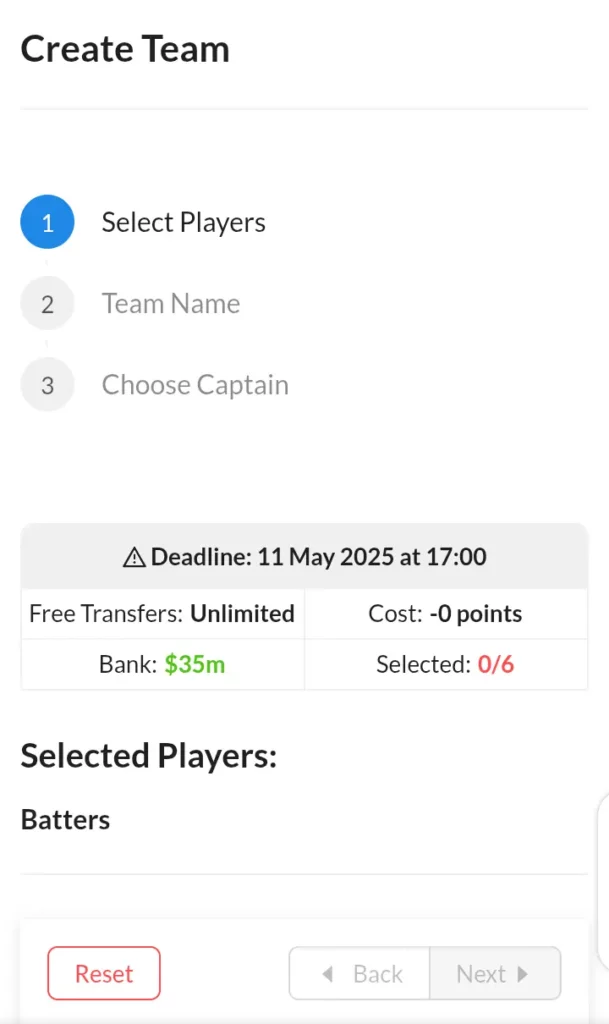
Points System: How Scoring Works
Fantasy cricket points are awarded based on a variety of match events, and different platforms may have slightly varied systems. However, the general scoring format includes:
Batting Points:
- Runs scored
- Boundaries hit
- Strike rate bonuses for T20/ODI formats
- Milestone bonuses (e.g., 50s, 100s)
Bowling Points:
- Wickets taken (e.g., 25–30 points per wicket)
- Maiden overs (especially in T20s)
- Economy rate bonuses (for keeping runs per over low)
- 3-wicket and 5-wicket haul bonuses
Fielding Points:
- Catches, run-outs, and stumpings (typically 8–10 points each)
- Direct-hit run-outs may carry bonus points
Bonus and Penalty Points:
- Player of the Match (on some platforms)
- Negative points for ducks (especially for top-order batsmen)
- Economy and strike rate penalties (if below a threshold)
This live scoring setup mirrors actual performance, encouraging fans to track games closely and update teams based on form, playing conditions, and matchups.
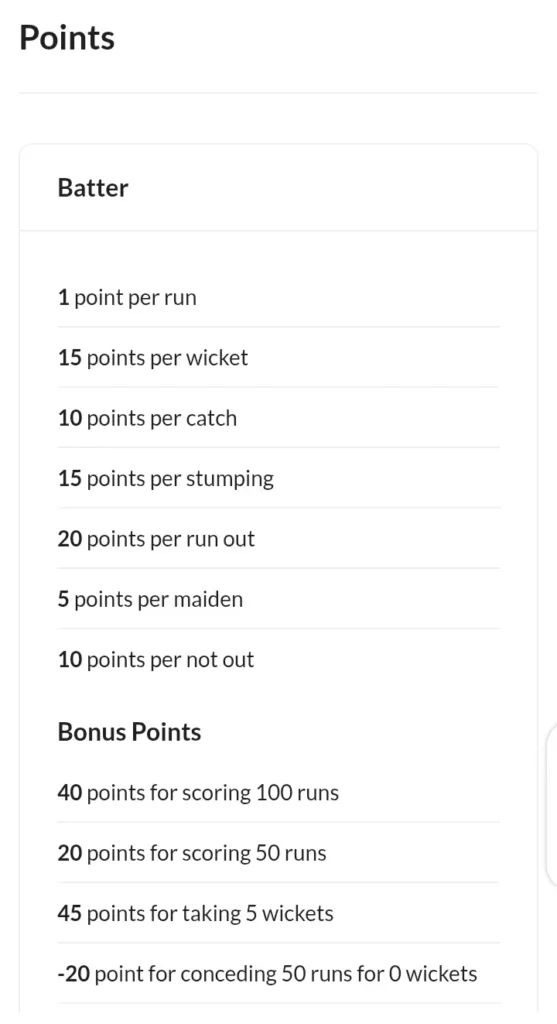
Match Formats and League Styles
Fantasy cricket platforms support various cricket match formats, and each has its own fantasy implications:
- T20 Matches: Require sharp, explosive selections. Ideal for aggressive all-rounders and power-hitters.
- ODI Matches: Favor players with consistency and endurance.
- Test Matches: Less common in fantasy but favored by purists; bowlers and patient batsmen shine here.
In addition to individual matches, users can also participate in series-based contests (e.g., an entire bilateral series or the full IPL season). These longer formats test sustained strategy, as users must balance performance, player fatigue, and match frequency over time.
Live Sync and Real-Time Excitement
One of the most exciting aspects of fantasy cricket is the real-time integration with live matches. As a game unfolds on the field, your virtual team’s score is updated in sync. Every boundary, wicket, or catch can propel your team up the leaderboard—or drop it dramatically. This connection amplifies viewer engagement, transforming passive spectators into deeply invested participants.
The Role of Toss and Final Playing XI
A unique challenge in fantasy cricket is making final adjustments post-toss, typically 30 minutes before match start. Toss decisions affect team composition, especially in matches influenced by pitch and dew conditions. Platforms allow users to edit their teams until the toss announcement, making those final moments critical for fantasy success.
With these mechanisms working seamlessly in the background, fantasy cricket blends strategic decision-making, real-time excitement, and deep cricket knowledge into one of the most engaging digital experiences for fans. It’s not just about picking your favorite players—it’s about predicting performance, managing risk, and adapting to dynamic match conditions in pursuit of the ultimate fantasy victory.
Types of Fantasy Cricket Leagues
Fantasy cricket platforms offer a diverse array of contest formats designed to cater to all types of players — from beginners looking for casual fun to seasoned strategists eyeing big winnings. Understanding the different types of fantasy cricket leagues is crucial for maximizing both enjoyment and success. Each league type has its own structure, risk-reward dynamics, and level of competitiveness.
Free Leagues vs. Paid Contests
The most fundamental distinction in fantasy cricket leagues is between free and paid formats.
Free leagues are ideal for newcomers. They allow users to join contests without any entry fee and are usually created for practice, entertainment, or platform promotion. While some may offer token prizes or reward points, the focus is more on learning and enjoying the game.
Paid contests, on the other hand, require a monetary entry fee and offer real cash rewards. These can range from a few rupees to thousands, depending on the contest and platform. Paid leagues attract more competitive players and are the backbone of the fantasy sports economy in India.
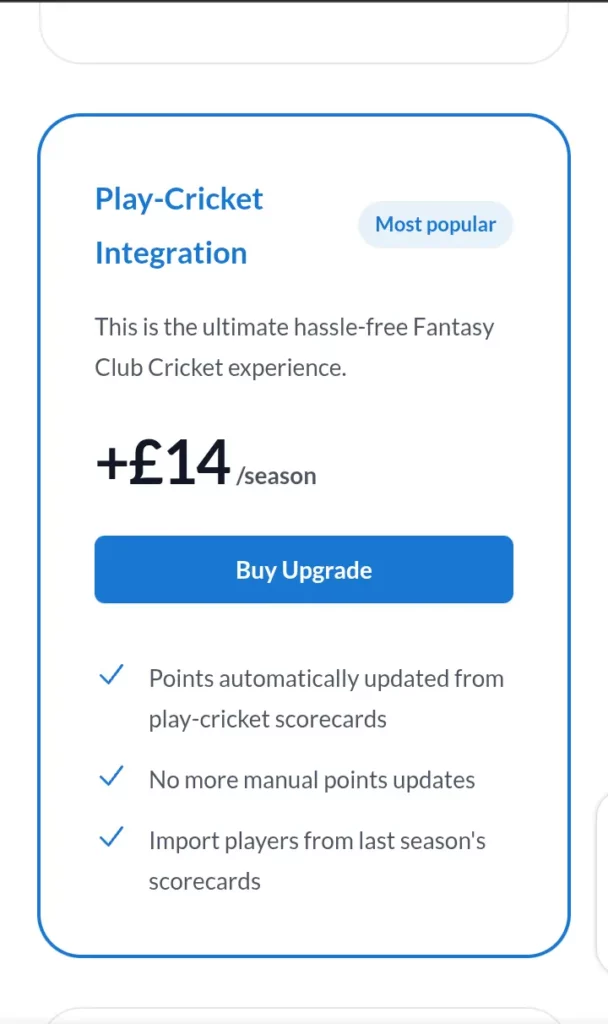
Head-to-Head Contests
In a head-to-head (H2H) format, only two players compete against each other. The winner takes the entire prize pool (or a major share, after platform fees). These contests are excellent for users who prefer one-on-one competition and can manage their teams with a high level of precision and analysis. The odds are straightforward — it’s either win or lose, making H2H leagues popular among tactical players.
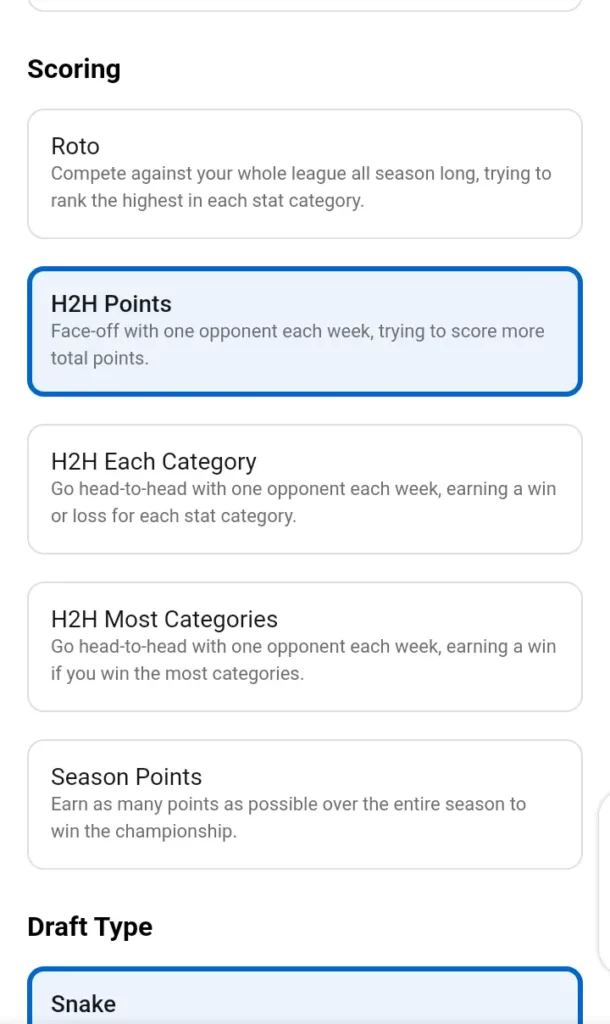
Mega Contests
Mega contests are large-scale public leagues where thousands — sometimes even millions — of users compete simultaneously. The prize pools in such contests are substantial, often featuring guaranteed jackpots. However, with massive participation comes steep competition. Only the top-performing few (typically top 10–30%) win any prizes. These contests reward highly optimized and often unique team combinations. They are perfect for ambitious players who aim for big returns and are willing to take calculated risks.
Private or Custom Leagues
Private leagues are user-created contests where the league owner sets the rules, entry fee, and participant list. These are commonly used among friends, family, or office groups, offering a more social and informal way to play. While prize pools are smaller, the camaraderie and bragging rights often make these leagues highly enjoyable and engaging.
Daily Fantasy vs. Season-Long Fantasy
Daily fantasy cricket is the dominant format in India. Here, users create a fresh team for each match or day, and contests are resolved quickly. This allows more opportunities to play and win.
In contrast, season-long fantasy involves picking a squad for an entire tournament or series, requiring long-term planning and patience. Though less popular, it attracts users who enjoy a marathon-style experience.

Platforms for Fantasy Cricket in India
India has firmly established itself as the global hub of fantasy cricket, with millions of users actively participating in contests across various platforms every day. This phenomenal rise in popularity is driven by several factors—the explosive growth of the Indian Premier League (IPL), widespread mobile and internet penetration, and the country’s deep-rooted passion for cricket.
Alongside the massive viewership and betting activity seen on leading Indian sportsbooks like Parimatch, fantasy cricket has carved out its own space in the digital sports ecosystem. A growing number of dedicated fantasy platforms now serve this thriving user base, each offering unique features, engaging gameplay formats, and the potential for substantial rewards. Below is a detailed look at the most popular and trusted platforms for fantasy cricket in India.
Dream11
Dream11 is the undisputed leader in the Indian fantasy sports market. It became the country’s first gaming unicorn and boasts over 100 million users. The platform is officially partnered with major leagues, including the IPL and the ICC. It offers a smooth, user-friendly interface, various contest formats, and reliable customer support. One of its strengths lies in its robust scoring system and wide range of contest types—ranging from practice leagues to high-stakes grand leagues. Dream11 also invests heavily in player education, making it beginner-friendly.
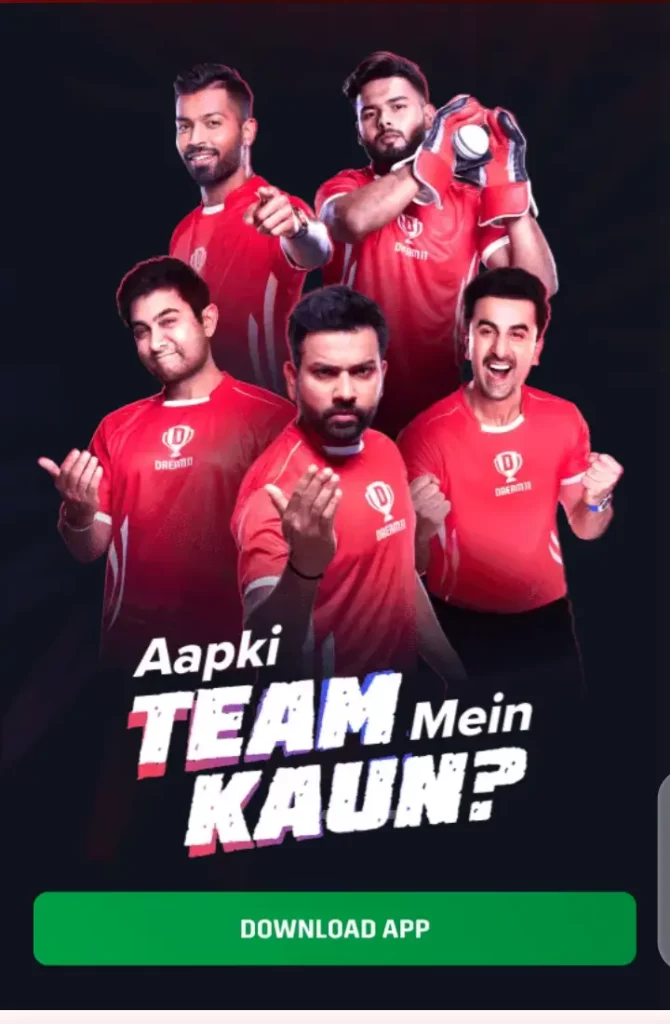
My11Circle
Backed by the legendary Sourav Ganguly, My11Circle has gained a strong following by allowing users to challenge celebrity teams and win substantial cash rewards. Known for its fast payout process and easy withdrawals, it focuses on providing a competitive yet user-centric environment. It often introduces creative formats and dynamic promotions, such as “Beat the Expert” contests, which draw massive participation.
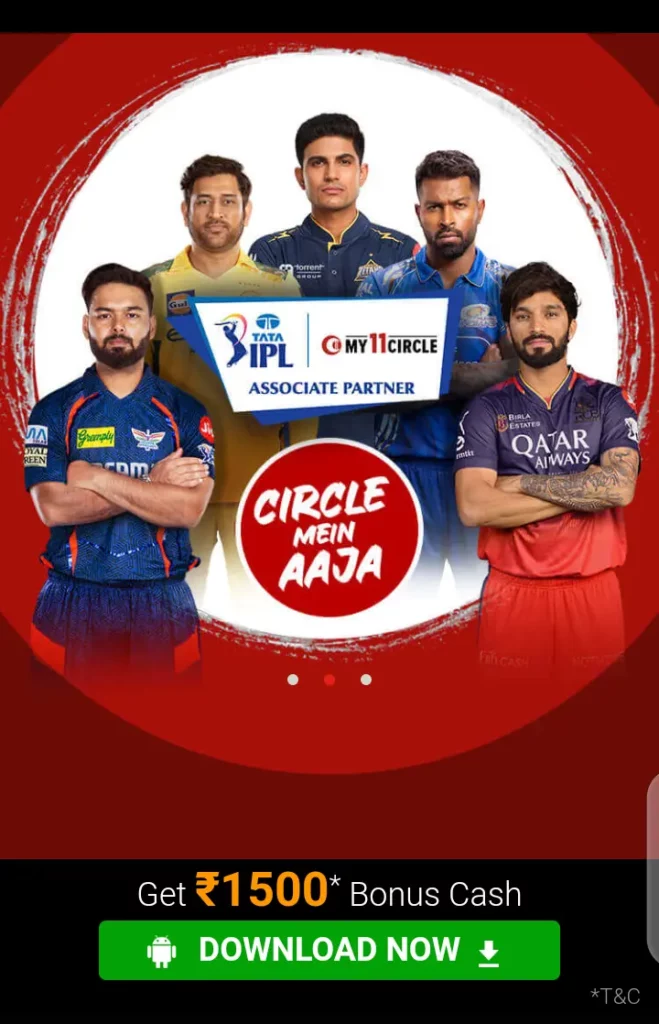
MPL (Mobile Premier League)
MPL is a multi-gaming platform that includes fantasy cricket as one of its key verticals. It stands out for its versatility, offering instant games, esports, and fantasy sports all in one app. MPL’s fantasy cricket section features daily contests, practice modes, and an intuitive design. It has also secured official partnerships with cricketing bodies and teams, reinforcing its legitimacy in the market.

PlayerzPot
PlayerzPot is a rising star in the fantasy sports scene, focusing on creating a balanced experience for both casual and professional fantasy players. The platform offers fantasy cricket along with football, kabaddi, and more. What makes PlayerzPot unique is its referral programs and frequent bonus campaigns, which appeal to users looking for consistent value.

A23 (Formerly Fanfight)
FanFight, once a popular standalone fantasy cricket platform, has now merged into A23 Fantasy, a part of the well-established A23 (Ace2Three) brand, known for online rummy. A23 Fantasy carries forward FanFight’s legacy while enhancing it with a broader ecosystem of skill-based gaming. The platform now offers fantasy cricket alongside rummy, poker, and other games, all integrated within a single app. It retains features like daily contests, transparent prize pools, and quick withdrawals, while expanding its user base through the A23 network.

Comparison Table
| Platform | Key Feature | Unique Selling Point |
| Dream11 | Industry Leader | Official partnerships with IPL/ICC |
| My11Circle | Celebrity Challenges | “Beat the Expert” format |
| MPL | All-in-One Gaming Platform | Fantasy + Instant Games + Esports |
| PlayerzPot | Strong Referral System | Value-driven promotions |
| A23 (Formerly Fanfight) | Extracash feature and gadget prize contests | Win premium gadgets like iPhones for as little as ₹10 |
Creating a Winning Fantasy Cricket Team
One of the most crucial aspects of succeeding in fantasy cricket is the art and science of team selection. While luck may occasionally play a role, consistently winning fantasy leagues requires deep analysis, attention to detail, and a strategic mindset. Building a balanced, competitive fantasy cricket team demands a clear understanding of player performance, match conditions, game formats, and tactical choices—especially when stakes are high.
Analyze Pitch and Weather Conditions
Before selecting your fantasy team, your first step should be to study the pitch report and weather forecast. These factors heavily influence how a match will unfold:
- Pitch Type: A dry, dusty pitch in India typically supports spinners, while bouncy tracks in Australia may favor fast bowlers. If it’s a batting paradise, stack your team with top-order batsmen.
- Weather Forecast: Overcast conditions often aid swing bowling. Rain-affected games may reduce overs, making all-rounders and power-hitters more valuable in shortened formats.
Use pitch history, recent team scores at the venue, and expert analyses to guide your player selection.
Study Player Form and Recent Stats
Form is often more critical than reputation in fantasy cricket. Selecting players who are in peak form ensures a better probability of point returns.
- Recent Match Performance: Prioritize players with consistent scores over the last few games. A batsman averaging 40+ or a bowler with regular 2–3 wicket hauls should catch your eye.
- Opponent Record: Some players perform particularly well against specific teams or under certain matchups. Use historical data to your advantage.
- Fantasy Points Trends: Fantasy apps often show recent average points per player—use this as an indicator of current value.
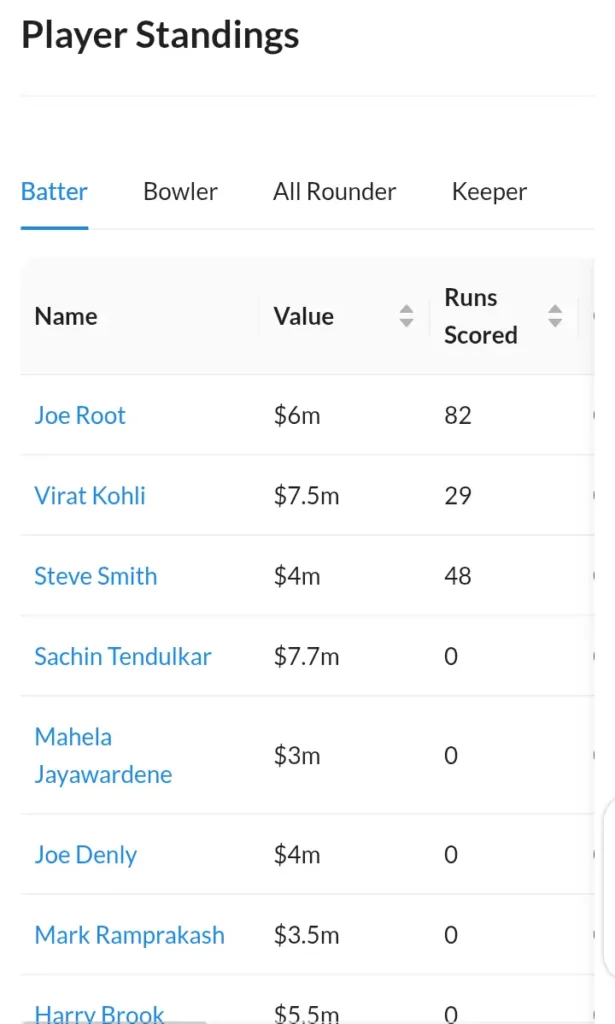
Maintain a Balanced Team Composition
Fantasy platforms typically allow a combination of:
- Batsmen
- Bowlers
- All-rounders
- Wicketkeepers
Here’s how to build a solid team:
- Top-Order Batsmen: In limited-overs formats, openers and top-three batsmen face more deliveries and have a higher potential to score big.
- Strike Bowlers: Choose bowlers who bowl during the powerplay and death overs, where wickets are more likely. Death-over specialists often pick up multiple wickets and can also gain economy bonus points.
- All-Rounders: These are your point multipliers. Since they contribute to both batting and bowling, they offer dual scoring opportunities.
- Wicketkeepers: Beyond their batting potential, wicketkeepers earn points for catches, stumpings, and run-outs, making them a key addition, especially if they bat in the top or middle order.
Use your credits wisely; over-investing in one category could weaken another.
Captain and Vice-Captain Selection Strategy
This is where most fantasy games are won or lost. The Captain earns 2x points, and the Vice-Captain earns 1.5x, so choosing them wisely can make a significant difference.
- Go with Consistency: Pick players with proven, recent form as your captain or vice-captain.
- All-Rounders Are Golden: Since they contribute in multiple ways, an all-rounder often makes a reliable captain pick.
- Risk vs. Reward: In high-stakes leagues, a differential captain (one not chosen by many) performing well can give you a massive edge, but this comes with risk.
Monitor player selection percentages on fantasy platforms for sharper decisions.
Monitor Toss and Playing XI Announcements
Toss plays a pivotal role in fantasy team decisions. Most platforms allow changes until the match officially starts. Here’s why it matters:
- Player Confirmation: If a player isn’t in the playing XI, you must swap them out to avoid earning zero points.
- Batting First or Chasing? Some players perform better while batting first or under chase pressure. For example, certain finishers thrive in chases.
- Bowling Order Adjustments: The toss can affect team bowling strategy. For instance, a team defending a total might deploy attacking bowlers early on.
Always set reminders for toss time and final playing XI updates.
Bonus Tips for Building Your Team
- Use All Available Credits Wisely: Avoid leaving large unused credit balances unless part of a deliberate strategy.
- Follow Team News Closely: Injuries, rotations, and last-minute withdrawals can ruin even the best-planned teams.
- Diversify Across Matches: If playing multiple contests, vary your combinations to reduce risk and maximize gain.
Building a winning fantasy cricket team involves a mix of analytical thinking, cricketing insight, and timely decisions. It’s not just about picking the “best” players, but about selecting the right players for the right match under the right conditions. Get this balance right, and you’ll not only improve your win rate but also enjoy a richer fantasy cricket experience.
Fantasy Cricket Tips and Strategies for Success
Fantasy cricket is a strategic game that requires a sharp eye, sound judgment, and a deep understanding of the sport. With millions of users competing on fantasy platforms, gaining a competitive edge is crucial. Here are tried-and-tested strategies and expert tips to help you consistently perform better in fantasy cricket contests.
Diversify Across Multiple Contests
One of the golden rules of fantasy cricket is not to rely solely on a single team or contest. If you’re participating in high-stakes or mega contests, always consider entering with multiple combinations. Diversification increases your chances of securing a win, especially if your primary lineup fails. Create a core group of 6–7 key players and rotate the rest across different combinations. This method hedges your risks and improves your odds of at least one lineup performing well.
Master Team Balance
A well-balanced team is crucial. Aim for a healthy mix of batsmen, bowlers, and all-rounders based on the match format and pitch conditions. In T20s, prioritize all-rounders as they offer points in both departments. In Test matches, dependable batsmen and strike bowlers should dominate your picks. Don’t overcrowd your team with big names—go for value players who may be under the radar but deliver consistently.
Captain and Vice-Captain Selection
Captain and vice-captain selections are arguably the most decisive choices in fantasy cricket, as they earn 2x and 1.5x the points, respectively. This is where you can gain an edge over most casual players. Avoid simply picking the most popular players. Instead, analyze recent form, pitch conditions, and match-ups. For instance, a top-order batsman facing a weak bowling lineup or a bowler playing on a spinner-friendly pitch makes for a smarter pick than the crowd favorite who might bat lower down the order.

Make Data-Driven Decisions
Avoid gut-based decisions and rely instead on data. Use reliable cricket analytics platforms that provide detailed player stats, matchups, pitch reports, and weather forecasts. Understanding the head-to-head records, averages at particular venues, and performance against specific opposition can give you an important strategic edge. Knowledge of recent domestic cricket form is also key, especially when international players are missing and lesser-known names step up.
Use the Toss to Your Advantage
Never finalize your team before the toss, especially in T20 and ODI formats. The toss can drastically change the team strategy—for example, bowling first on a dewy evening or batting on a dry pitch. Use the last 30 minutes after the toss to make final edits to your team, ensuring that all your selected players are in the confirmed playing XI. This step alone can save you from zero-point disasters.
Avoid Emotional Bias
A common mistake is picking players based on loyalty or favoritism. Your favorite cricketer may not be the best fantasy pick for a specific match. Successful fantasy players treat each game with objectivity. Drop out-of-form players, even if they’re stars, and don’t hesitate to back emerging talent if the data supports their inclusion.
Track Injury Reports and Squad Rotations
Injuries and last-minute squad changes can ruin your team if you’re not alert. Follow official sources, team announcements, and press conferences, especially in leagues with hectic schedules like the IPL. Rest and rotation policies are common in bilateral series and franchise tournaments, so stay updated until the last moment.
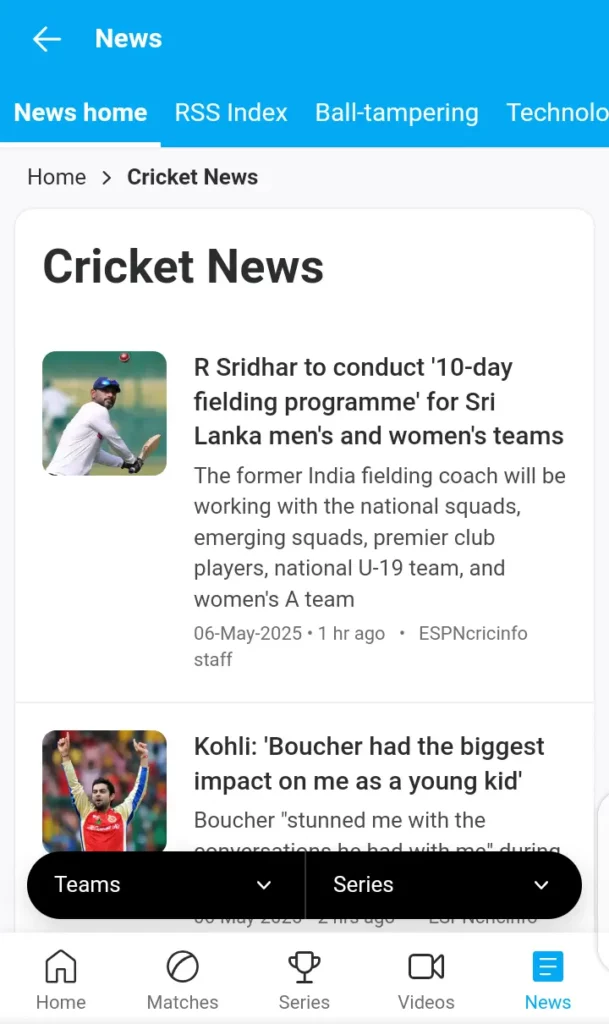
Bankroll Management
Just like poker or stock trading, bankroll management in fantasy cricket is key to long-term success. Don’t put all your money into a single contest. Allocate your budget wisely—distribute entries among small contests with higher chances of winning and use only a portion for mega contests. Avoid chasing losses and set daily or weekly limits.
Fantasy Cricket and Data Analytics
In the evolving world of fantasy cricket, data analytics has emerged as a game-changer. Once reliant on personal research, fantasy cricket players today are leveraging data-driven strategies to gain a competitive edge. From player performance statistics to pitch analysis and predictive modeling, data analytics enables users to make informed decisions that can significantly improve their chances of success.
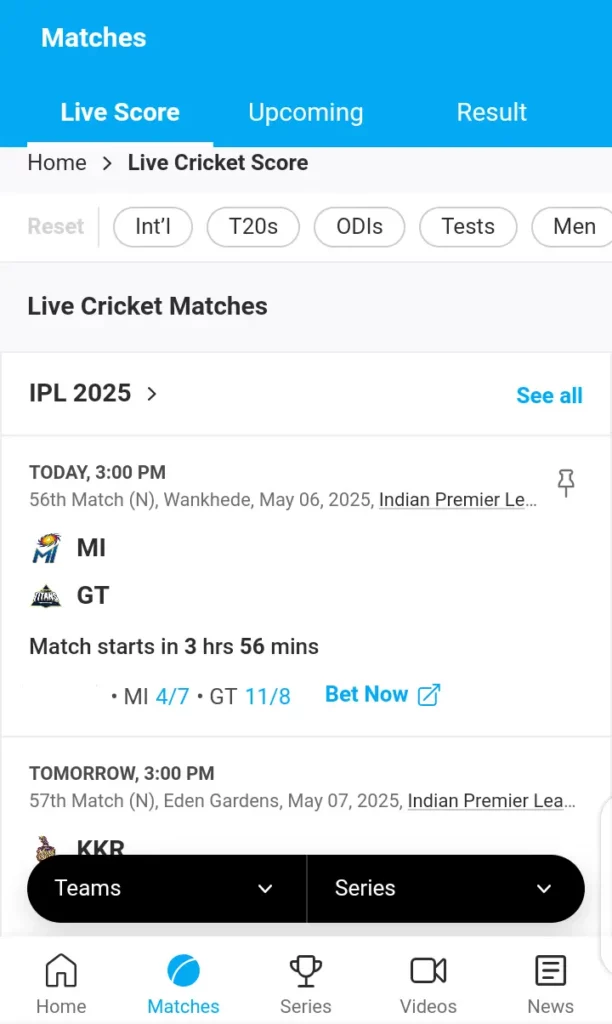
The Role of Data in Fantasy Cricket
Fantasy cricket fundamentally relies on real-life player performances, making historical and real-time data invaluable. Key performance indicators (KPIs) such as batting averages, strike rates, economy rates, and recent form help users evaluate players beyond their fame or reputation. Advanced users even analyze more granular metrics like player performance against specific oppositions, venue records, and behavior under pressure situations (e.g., death overs for bowlers).
Match-specific factors such as pitch reports, weather forecasts, and toss outcomes also play a pivotal role. For example, a bowler who thrives on dry, spinning wickets may not be as effective on a green, seaming surface. Data analytics helps synthesize all this information into actionable insights for team selection.
Tools and Platforms for Statistical Analysis
Fantasy players now have access to a range of analytical tools and platforms that simplify complex data. Websites like CricViz, HowStat, Cricmetric, and ESPNcricinfo StatsGuru offer deep statistical breakdowns. Mobile apps and third-party APIs such as Fantasy Gully, Fancode, and CricInformer also provide fantasy-specific analysis, including projected points, player form graphs, and matchup-based predictions.
Some platforms even use AI algorithms to recommend optimized team combinations. These tools crunch vast datasets to calculate probability models, simulate match outcomes, and identify high-value differential picks—players who are low-owned but statistically promising.
Using Data to Gain a Competitive Advantage
Understanding data isn’t just about knowing the numbers—it’s about interpreting them within context. For example, a player might average 45 in ODIs overall but drops to 28 against a specific bowling attack. Recognizing these trends gives players an edge, especially in grand leagues or high-stakes contests where the margins between winning and losing are razor-thin.
Captain and vice-captain choices can be especially influenced by data. Since these roles multiply the player’s points by 2x and 1.5x respectively, choosing a consistent high-performing player or someone expected to have a big impact based on analytical projections can make or break your fantasy team.
The Rise of Predictive Modeling
A more advanced trend in fantasy cricket is predictive modeling—the use of machine learning to forecast player performance. These models consider a multitude of variables, from match conditions and past trends to behavioral patterns, to predict the probability of outcomes like a player scoring a fifty or taking three wickets. While no model can predict outcomes with certainty, they significantly improve the odds of smart decision-making.
Legal Aspects and Responsible Gaming
Fantasy cricket has witnessed exponential growth in recent years, particularly in India. As millions of users engage with platforms like Dream11, MPL, and My11Circle, questions around legality and responsible participation have become increasingly important. Understanding the legal framework and maintaining ethical play are critical for both users and platform providers.
Is Fantasy Cricket Legal in India?
The legality of fantasy cricket in India hinges on its classification as a game of skill rather than a game of chance. According to the Public Gambling Act of 1867, games of chance fall under gambling and are largely prohibited, while games of skill are permissible. In a landmark ruling in 2017, the Punjab and Haryana High Court, followed by affirmations from the Supreme Court of India, held that Dream11’s fantasy sports format qualifies as a game of skill. This ruling essentially legalized fantasy sports under Indian law, as long as they meet similar criteria.
A game is considered one of skill if success depends more on knowledge, judgment, and strategic planning than on sheer luck. In fantasy cricket, users must analyze player statistics, pitch conditions, weather reports, and team dynamics to create successful teams, clearly involving skill.
State-Wise Legal Status
Despite nationwide legal validation, paid fantasy cricket is not uniformly legal across all Indian states. Certain states like Assam, Odisha, Telangana, Andhra Pradesh, Nagaland, and Sikkim have specific local gambling laws that either ban or do not recognize the distinction between skill and chance. As a result, most major fantasy platforms restrict access to users from these regions.
It’s essential for players to check local laws and the terms and conditions of each platform before registering or participating in paid contests. Many apps use geolocation-based restrictions to prevent access in legally grey areas.
Platform Licensing and Regulatory Moves
Although there is no dedicated central regulatory body for fantasy sports in India as of 2025, the industry has taken significant steps toward self-regulation. The Federation of Indian Fantasy Sports (FIFS), a self-governing body, was established to ensure fair play, data privacy, and consumer protection across fantasy platforms. Some platforms are also pushing for centralized government regulation to provide uniformity and boost investor confidence.
The Ministry of Electronics and Information Technology (MeitY) has also made preliminary moves toward drafting online gaming guidelines, aiming to create a safer and more transparent ecosystem.
Responsible Gaming Practices
As fantasy cricket involves financial stakes and can be addictive, promoting responsible gaming is crucial. Reputed platforms now incorporate features such as:
- Deposit limits and contest caps
- Time tracking and usage alerts
- Self-exclusion tools
- Age verification (18+ mandatory)
- KYC (Know Your Customer) protocols for secure withdrawals
These features ensure users remain in control of their gaming habits and make informed decisions. Many platforms also run awareness campaigns to educate users about the importance of budgeting and avoiding impulsive play.
Fantasy Cricket vs. Sports Betting
Fantasy cricket and sports betting are two distinct yet often conflated forms of sports-related entertainment, particularly in regions where cricket enjoys immense popularity. At their core, both involve predicting outcomes and leveraging knowledge of the game, but their mechanics, goals, and user experiences differ significantly.
Nature of Engagement
Fantasy cricket is fundamentally a game of skill, where users create virtual teams comprising real-life players. Points are awarded based on the actual performance of these players during a live match. Success in fantasy cricket is primarily determined by the participant’s knowledge of the game, analytical abilities, and strategic team-building. Conversely, sports betting is usually based on predicting specific outcomes, like who will win, the margin of victory, or over/under totals. It involves visiting popular sportsbooks like Parimatch and wagering real money directly on these outcomes. You win when your predictions pan out and lose your stake otherwise.
Legal Perspective
Because of this distinction between skill and chance, fantasy cricket is generally not subjected to the same legal scrutiny as sports betting. Courts in India, for example, have classified fantasy sports as skill-based activities, exempting them from gambling bans in most states. Sports betting, however, is largely illegal under current Indian laws, with strict regulations and prohibitions in place across many jurisdictions. This legal clarity has allowed fantasy platforms to flourish, while betting remains in a regulatory gray zone or is outright prohibited.
Depth vs. Simplicity
Fantasy cricket demands deeper engagement. Users must evaluate player form, pitch conditions, weather forecasts, and match-ups to craft a competitive team. This fosters ongoing participation across multiple matches and tournaments. Sports betting, on the other hand, can be more transactional, with quicker decision cycles. A single wager may take seconds to place, whereas fantasy cricket requires sustained attention before and during the game.
Risk and Reward Dynamics
Both formats involve financial risk when money is staked. However, sports betting typically offers higher volatility—large potential payouts but also a higher chance of loss. Fantasy cricket, especially in multi-entry or skill-based formats, allows more controlled and diversified risk, with users often spreading their selections across several contests or team combinations.
User Motivation and Experience
Fantasy cricket appeals to those who enjoy the strategic aspect of team management, similar to running a cricket franchise. It enhances the viewing experience by keeping users invested in individual player performances, not just the final match result. Sports betting is more result-oriented, which can sometimes diminish the appeal of a match once a bet is lost.
Audience Appeal
Fantasy cricket attracts users who enjoy data-driven decisions and team strategy, similar to managing a sports franchise. Sports betting tends to attract those seeking high-risk, high-reward opportunities with simpler decision trees.
Fantasy Cricket and IPL: A Special Bond
Fantasy cricket and the Indian Premier League (IPL) share a deep, symbiotic relationship that has redefined the fan experience in Indian cricket. The IPL, with its glitz, global stars, and high-octane action, has not only captivated cricket lovers across the world but also provided the perfect setting for fantasy cricket to flourish. With its fast-paced nature, daily matches, and constantly changing lineups, the IPL delivers an ideal structure for fantasy leagues that thrive on real-time performance and daily engagement.
Peak Engagement During IPL Season
Every year, fantasy platforms see a dramatic surge in activity during the IPL season. According to industry estimates, over 70% of fantasy cricket revenue in India is generated during the IPL. Millions of users log in daily to create teams, enter contests, and monitor player performances. The format of the IPL — with matches almost every day for nearly two months — provides an ongoing cycle of opportunities for users to play and win, making it far more engaging than one-off international series.
Official Partnerships and Brand Visibility
The rise in popularity of fantasy cricket during the IPL has also led to official collaborations. Dream11, India’s biggest fantasy sports platform, became the title sponsor of the IPL in 2020 and has continued to be closely associated with the league. These partnerships have boosted the legitimacy and brand recall of fantasy platforms, giving them a level of trust and visibility among users. The integration of fantasy stats into broadcasts and team promotions further tightens the bond between IPL and fantasy gaming.
Player Familiarity and Team Variety
The IPL features a rich mix of global superstars, emerging local talent, and seasoned domestic players, offering fantasy users a wide pool of options for team creation. It encourages users to follow every team and not just their home side or favorite stars. Lesser-known players become cult heroes in fantasy leagues due to their high point returns, fostering deeper engagement and a nuanced understanding of the sport.
Driving Innovation and Gamification
The competition among fantasy platforms during IPL has spurred innovations in game mechanics and gamification. Concepts like 2nd innings fantasy, fantasy stock markets, player cards, boosters, and power plays have emerged primarily as IPL-specific experiments. Fantasy apps also roll out special promotions, leaderboard prizes, mega contests with crores in prize pools, and loyalty rewards during IPL, driving user retention and acquisition.
Conclusion
Fantasy cricket has emerged as more than just a digital pastime—it’s a strategic blend of sports knowledge, data interpretation, and real-time decision-making. It has transformed the way fans engage with cricket, offering a deeper, more personal connection to every ball bowled and run scored. For millions, it’s not just about winning contests but about testing their cricketing acumen against a dynamic, competitive community.
As technology continues to evolve, fantasy cricket is poised to become even more immersive with advanced analytics, artificial intelligence, and perhaps even blockchain-driven platforms shaping its future. However, with the thrill of competition comes responsibility. Understanding the legal landscape, practicing responsible gaming, and staying informed are key to enjoying fantasy cricket sustainably.
Whether you’re a casual fan or a serious strategist, fantasy cricket offers a gateway to elevate your cricketing experience, making every match not just watchable, but winnable. The game is no longer just on the field; it’s in your hands.
Frequently Asked Questions (FAQs)
Is fantasy cricket legal in India?
Yes, fantasy cricket is legal in most Indian states. Courts have ruled it as a game of skill, not chance. However, some states like Assam, Odisha, and Telangana restrict cash-based fantasy gaming.
Can I play fantasy cricket for free?
Absolutely. Most platforms offer free contests alongside paid ones, making it accessible for beginners to learn without risking money.
How is scoring determined in fantasy cricket?
Points are awarded based on players’ real-life performances—runs, wickets, catches, and other metrics. Scoring systems vary slightly across platforms.
What happens if a selected player doesn’t play?
If a player in your fantasy XI doesn’t make the actual playing XI, they earn zero points. Always check final team announcements before the deadline.
Can I change my team after the toss?
Yes, but only before the match begins. Most platforms allow updates until the match locks, which is usually after the toss.
How many teams can I enter in a contest?
It varies. Some contests allow multiple entries, letting you try different strategies or lineups.
Is fantasy cricket only popular during the IPL?
No, while IPL drives peak engagement, fantasy cricket runs year-round across international and domestic matches worldwide.
